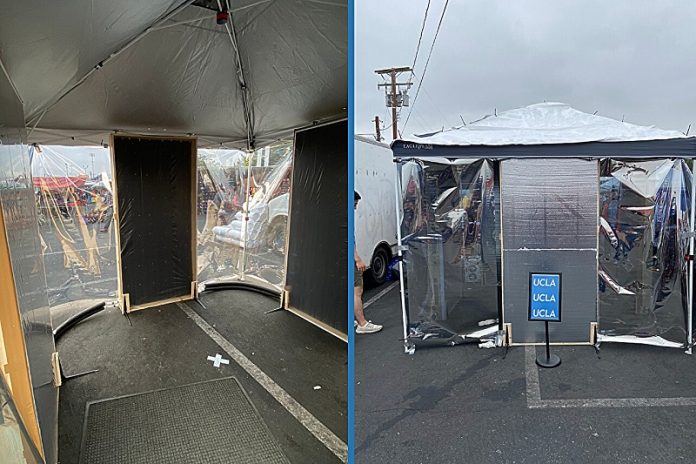
UCLA researchers have created a new type of outdoor cooling system that can make it feel up to 10 degrees Fahrenheit cooler—even on hot days.
This breakthrough offers a safe and affordable way to help people feel more comfortable outside, especially during heatwaves, without needing air conditioning.
The research, published in Nature Sustainability, focused on improving something called radiant cooling.
This technique works by using nearby surfaces to absorb and remove heat from people, instead of cooling the air directly.
Until now, radiant cooling has mainly been used indoors or in shaded, enclosed spaces. But these designs aren’t always safe or practical for public outdoor areas like parks or bus stops.
To solve this, the UCLA team built a unique outdoor tent that combines see-through walls with special cooling materials. The tent includes water-cooled aluminum panels and a thin film that reflects invisible infrared light.
This combination cools the space effectively while still allowing people to see outside. It feels open, bright, and safe—something that’s especially important in cities.
The tent, about 10 feet wide and 10 feet long, was tested at the UCLA campus and at the San Fernando Swap Meet on warm days when temperatures reached the mid-80s Fahrenheit.
Inside the tent, the researchers measured what’s known as mean radiant temperature, which is how hot a person feels based on the heat coming from nearby surfaces—not just the air temperature. They found the tent’s radiant temperature was around 78°F, while the air outside was 84°F, and nearby surfaces pushed radiant temperatures to about 90°F.
In simpler terms, standing in the tent felt more than 10 degrees cooler than standing in the open sun, even though the actual air temperature didn’t change. People who tried the tent said they felt noticeably cooler and more comfortable compared to standing in shade alone.
This new design could be a game-changer for cities facing rising heat due to climate change. With more frequent and intense heatwaves, outdoor cooling options are badly needed, especially in areas where traditional air conditioning isn’t an option. The tent is low-cost, easy to scale up, and could be placed in metro stations, public plazas, and parks.
UCLA urban planning expert V. Kelly Turner said that cities should start thinking of shade as part of essential infrastructure, like roads or power lines. This new cooling tent is one way to add comfort and safety in places where natural shade is lacking.



